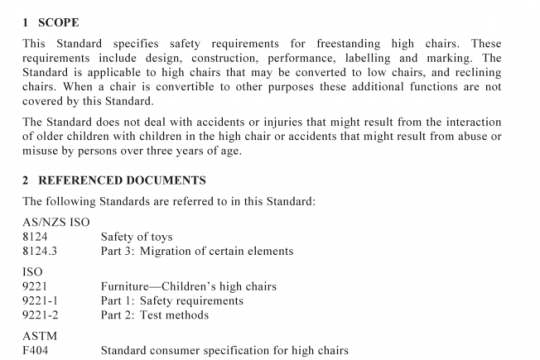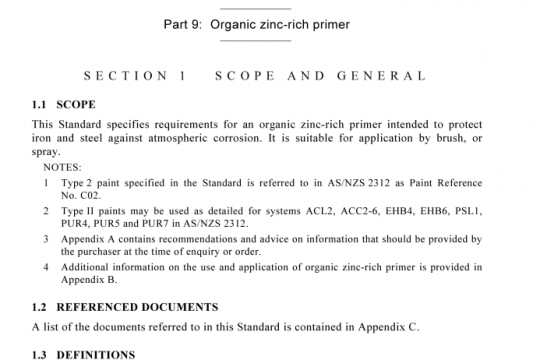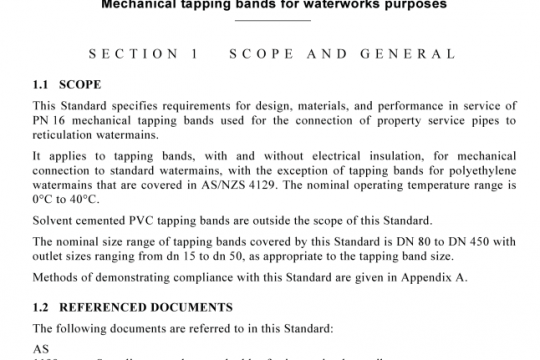AS 1049.1:2014 pdf free
AS 1049.1:2014 pdf free.Telecommunication cables – Insulation,sheath and jacket
A cable construction where the polyethylene sheath is integrally bonded to the PA jacket by chemical modification or by multiple processing techniques, or by both.
NOTE: One such method is to use a specifically formulated PE which meets the requirements of Clauses 3.5 and 5.4.
A cable construction that has a cable core that is filled with a jelly-like substance which prevents water from seeping or flowing along the length of the cable in the event of a rupture through the protective sheath layer.
A cable construction that has a metallic tape which is bonded to the inner surface of the sheath to prevent moisture permeation into the cable core. The metallic tape may also serve as an electrical screen.A single or multiple layer of the same or different dielectric material(s) over the conductors. An example of multiple layer insulation is termed ‘foam-skin’,which comprises a cellular layer covered with a solid layer.
NOTE: The material(s) may be solid or cellular or a combination of these. Cellular insulation is manufactured by using a blowing agent compounded in the granules or by using air-or gas-blowing at the extrusion process.
A protective layer, for example, an inner sheath over the core of a cable or an outer sheath over the armouring.
A layer over the sheath of a cable to protect the installed cable against, for example, rodents or mechanical equipment. The armouring may be bonded to the sheath and is typically manufactured from steel tape, wire or corrugated sheet. An example is rodent resistant armouring over a PE sheath with an outer sheath of PE and a PA jacket.
The protective layer over the sheath of a cable. Examples are a PE jacket over a metallic sheath and a PA jacket over a PE sheath.
A term used to describe a material that does not contain fluorine, chlorine, bromine or iodine and that is used in the form of an additive in a compound or in the main backbone of a polymer.
Halogens are used in various compounds to act as fire or flame retardants, or both. Non-halogenated materials are used where the halogenated material properties of evolution of corrosive and toxic gases in a fire are not desired.
Thermoplastic materials based on homopolymers or copolymers of ethylene and containing not less than 85% ethylene and not less than 95% olefins.
NOTE: This definition is based on AS 1886, but specific limits have been added. Within the limits of this definition, all possible structures and densities of polyethylene are included, for example, long- chain branched, short-chain branched, linear, alpha- olefin copolymers and melt homogenized blends of any of these.AS 1049.1 pdf free.




